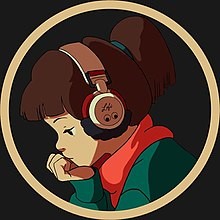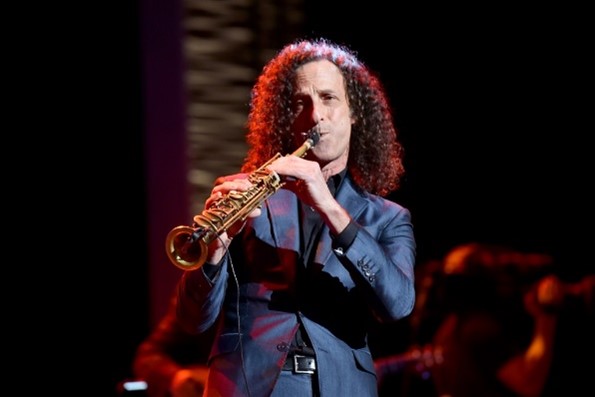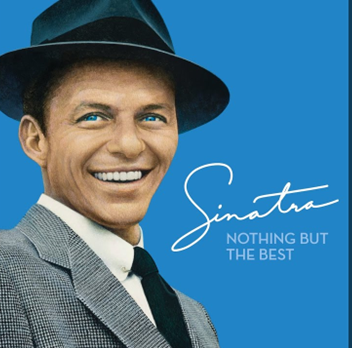Right now, there are more people listening to this radio station than are tuned in to the #1 station in Chicago.
Its logo is so iconic; fans use it in memes.
Even the New York Times has written about it.
The thing is, technically it isn’t a radio station. It’s a YouTube channel called Lofi Girl
Lofi Girl’s main video is a 24/7/365 stream called “lofi hip hop radio – beats to relax/study to”. The channel has 12-million YouTube subscribers and between 30,000 and 60,000 listeners at any given moment. The channel’s music is accompanied by an animated image of a girl studying while wearing headphones and a listener chat thread.

True to the name, the stream plays Lofi Hip Hop—or simply Lofi—a style of instrumental music that merges hip hop beats with slow and simple melodies and ambient sounds into hypnotic but non-obtrusive music. It’s intentionally and unapologetically background music, intended to help you “relax” or “study.”
Don’t let the Hip Hop moniker fool you. While the beats are from that genre, there’s no rap—or any words—in Lofi Hip Hop. Its vibes are more Kenny G than Kendrick Lamar.

The genre is so intentional in its purpose of blending into the background that the music avoids very low base and very high treble, focusing on the 200Hz to 10kHz range—hence the “Lofi” name. The idea is that since fans are listening on headphones, limiting the frequency response of the music will better blend the beats the listener hears in their headphones with the random and distracting noises in their environment.
Lofi also leaves in imperfections, from beats that aren’t always on beat to ambient noise. For such a minimalist music style, it is those imperfections that give the music character.
SOUNDS FAMILIAR?
This meticulous musical engineering of a relaxing mood might sound vaguely familiar to radio pros old enough to remember the 1970s, when the Beautiful Music station was often the highest rated FM in town. (Jim Shulke, Elevator Music’s #1 syndicator, demanded meticulous detail to sound levels, audio qualify and format execution from subscribing stations to scientifically maximize TSL)
Then came Smooth Jazz in the 1980s, when Al Jarreau, Dave Koz, Acoustic Alchemy and Spyro Gyra provided the new-age chill after a hard day for sophisticated yuppies.
There’s a fundamental difference, however, in Lofi’s fan demographic: Its appeal stems nearly entirely from Gen Zs in their teens and early 20s.
It’s their parents who are lambasting the genre, as in this New Yorker article that called it Apathetic Music to Make Spreadsheets To.
KIDS THESE DAYS
Why are kids embracing an Easy Listening genre? It makes sense when you understand today’s teenagers.
Their childhood has seen financial uncertainty, political divisiveness, climate fears, European and Middle East wars, and a deadly pandemic. For college bound teens, choosing the wrong school—where a degree’s earning potential can’t pay off the massive student loan debt—is a financial life and death decision.
As generational historian Neil Howe highlights in his new book, while we Generation X teens craved more freedom from a society with stifling structure, today’s teens are craving security from a society with crumbling structure.
No wonder they’re embracing music that takes the edge off.
In our lifetime, softer styles of music have always attracted older ages of listeners. Each new generation has pushed popular music to harder places. Rock led to Metal then to Grunge. Soul became Funk became Hip Hop.
That Michael Bublé CD you bought was for your mom, not your kids.
However, we have seen this pattern before just before this blog’s oldest reader was born. The Silent Generation kids who grew up too young to fight in World War II turned popular music tastes away from the ballroom-oriented Big Band style popular among the Greatest Generation and towards the crooners and small jazz combos you’d enjoy in your bedroom. They made music softer.

In our time of crisis and confusion, young people are changing popular music comparably.
Lo Fi’s Gen Z appeal also explains why it’s not on radio’s radar: As FM radio’s TSL becomes increasingly generated by listeners over 30, we’re simply not probing the tastes and mindsets of music fans under age 25. That’s a mistake.
Lofi probably isn’t a viable FM format. However, understanding why Lofi appeals to Generation Z could help us—as Coleman Insights’ Jay Nachlis highlighted—evolve our existing formats to be relevant to Generation Z, from our presentation styles to our social media engagement—and even our audio processing.
Even though it’s a YouTube channel, make no mistake: By providing a constant stream of curated music designed to fulfill a specific emotional need, “lofi hip hop radio – beats to relax/study to” is a radio station.
